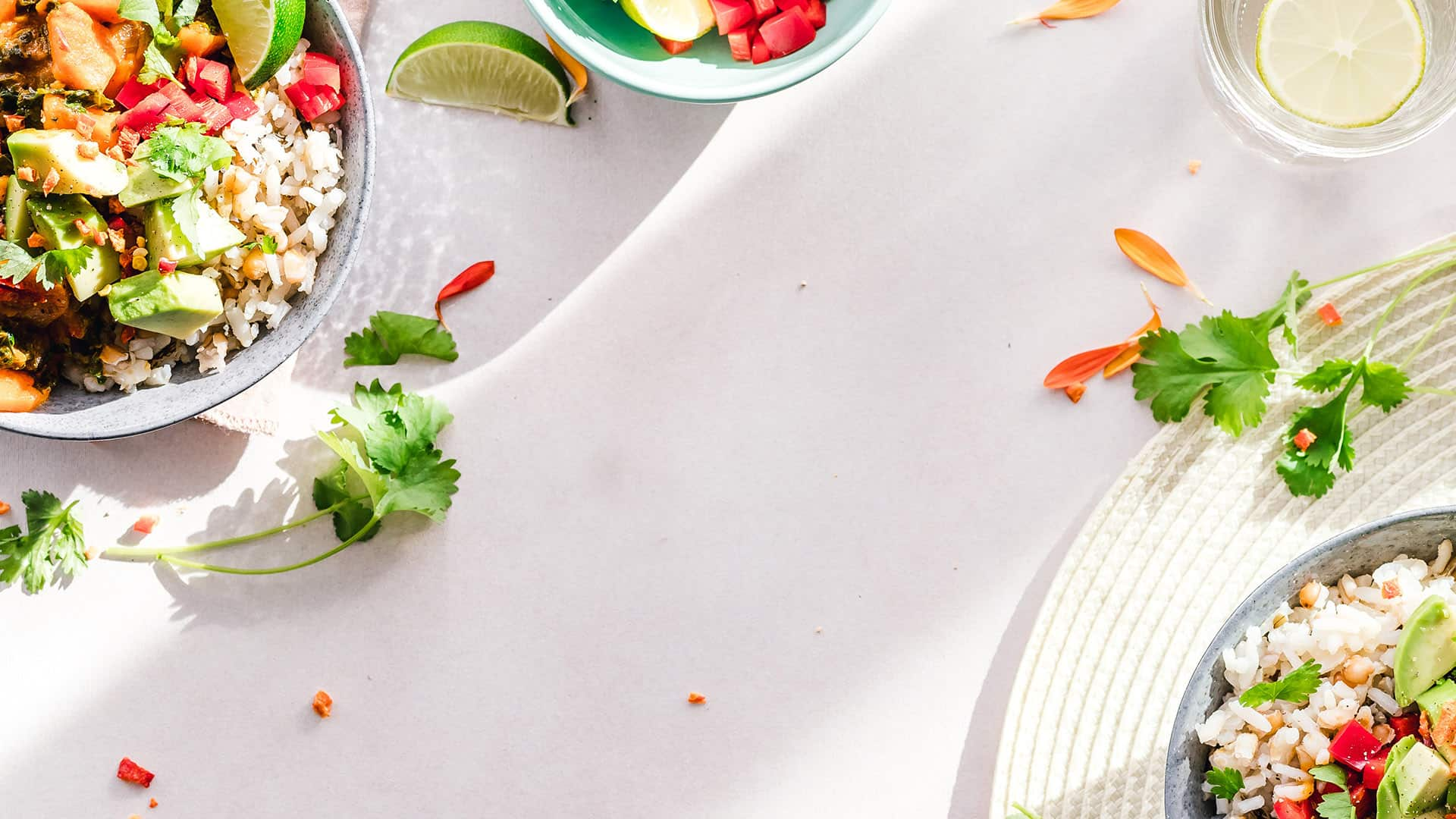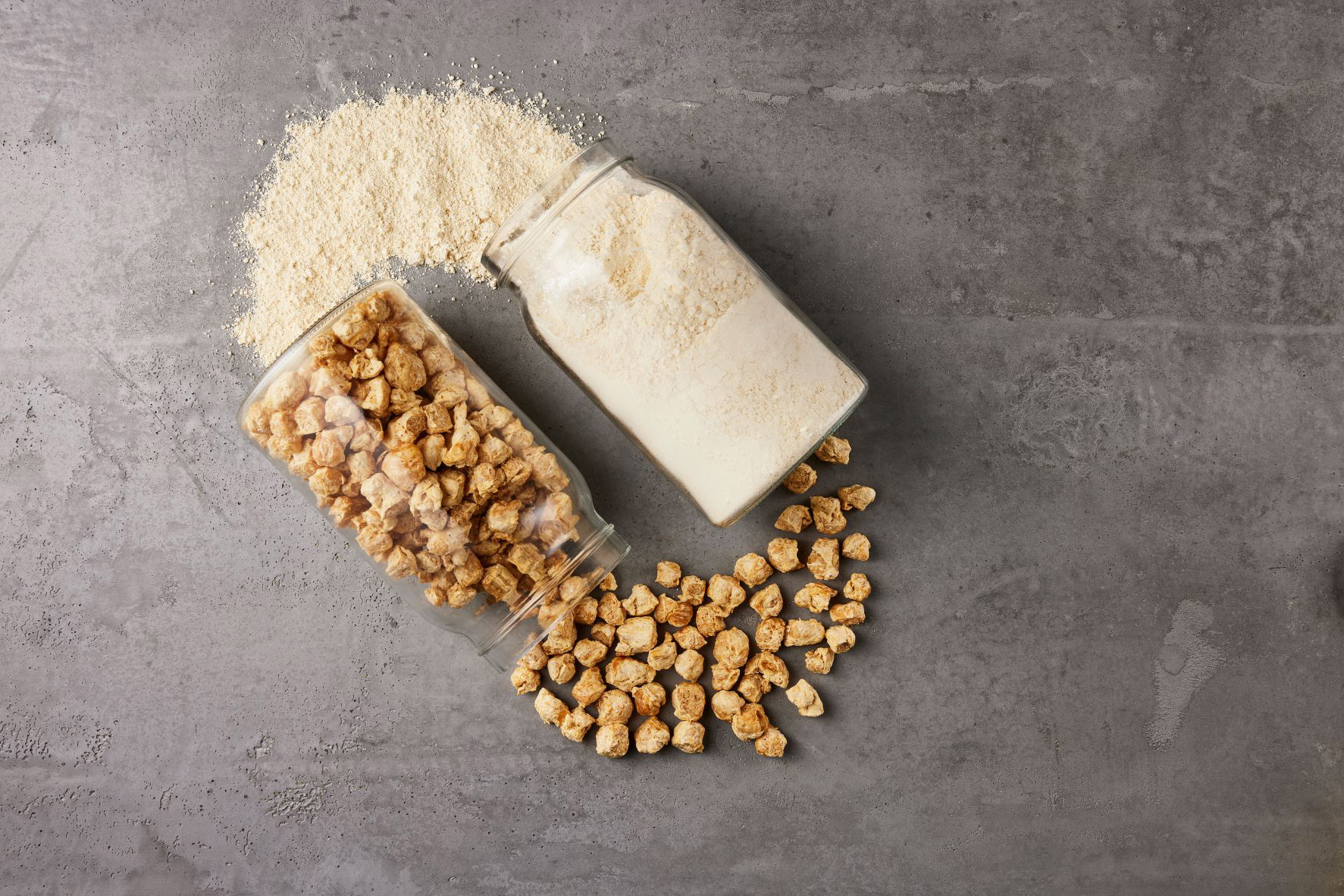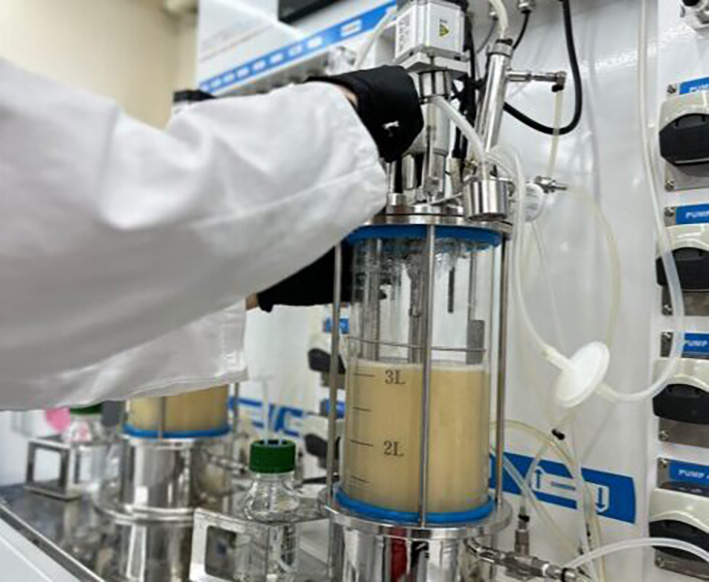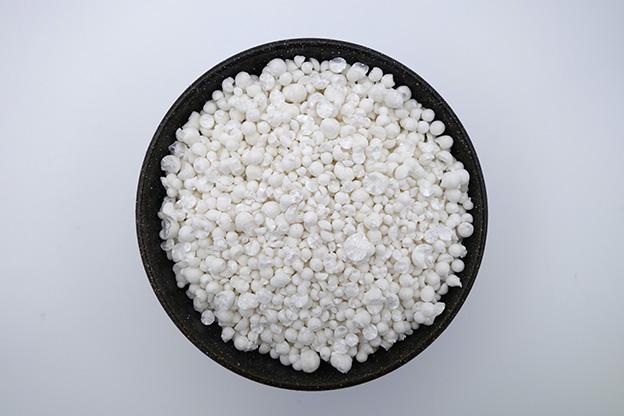

Talking Heads: Label logic
What does 'clean label' really mean in the context of alternative proteins? From science-backed simplicity to function-first formulation, Amity Reed explores how innovators are navigating the blurry boundaries of transparency, trust, and taste in a world of growing consumer scrutiny
Although ‘clean label’ may sound like a recent buzzword, it has been circulating in the food industry for more than two decades. Coined in the early 2000s amid growing public awareness of health and sustainability, it’s now a term familiar to many. But with no precise definition and no international consensus on its application, it has remained, at times, a nebulous concept. There are certainly instances of manufacturers – particularly in low-nutrition, ultra-processed foods – exploiting loopholes and making disingenuous health claims, which underscores a clear need for greater clarity and oversight.
While the alternative protein industry largely supports the introduction of a more cohesive regulatory framework for clean label, the lack of restrictions has also provided a degree of freedom – to interpret, to invent, to innovate. Public demand for better, healthier, and more eco-friendly products has brought scientists and investors together to drive extraordinary progress in the future of food, as evidenced by the innovators profiled in this article (and magazine!).
The ability to respond to regional market preferences and emerging trends – which evolve much faster than regulations – has fueled a responsiveness in clean label development that might not otherwise exist. Labeling standards and claims verification will undoubtedly arrive – as they should – but the question for now remains, what does clean label mean to you? More importantly, what does it mean to consumers?
Clarity is the new currency
Across the board, in every context and in response to every market-tested product, consumers have made it clear what they want: transparency, honesty, trust. They want plain language and simple terms. They want natural ingredients. They want to understand what’s in their food, how it was processed, and what it offers. They want to know it was made responsibly and ethically, with minimal harm to the planet. Conveying all of that on a two-inch label is undeniably a huge challenge – but for those whose lives and careers revolve around solving age-old problems with new solutions, it is one they not only accept, but welcome.
Clean label isn’t a conundrum – it’s an opportunity to connect with people who are willing to take a chance on unfamiliar products. People willing to trust. When we see them not just as consumers but as fellow innovators, the label becomes more than a means of relaying information – it becomes the starting point of a deeper conversation.

Brannatura
Clean label is one of the most sought-after features in alternative protein, but also one of the most misunderstood. The gap between what consumers expect and what food science can realistically deliver is substantial, creating tension that producers must navigate. Sander Sieuwerts, Co-Founder & Director of Danish food innovator, Brannatura, doesn’t shy away from this sometimes uncomfortable but vital conversation.
“Although ‘clean label’ is understood as product formulations without, or with as few, processed ingredients as possible, it is difficult to define it exactly,” he believes. “For example, ‘sunflower seed powder’ would be preferred over ‘sunflower lecithin,’ even though both have the same function – lecithin is the component providing emulsifying characteristics in seed powder.

“Very much related to the ‘clean label’ discussion is the ‘overprocessed’ discussion,” Sieuwerts continues. “Consumers see alternative protein products as overprocessed and full of chemicals and E-numbers, which makes these products unhealthy. This is a viewpoint successfully propagated by the dairy and meat industries, despite their own products containing many of these chemicals naturally, as do fruits and vegetables.”
Bridging expectation and reality
For Sieuwerts, the issue is often unrealistic consumer expectations, shaped by a limited understanding of food production. “Most complex food technologies will need ‘help’ to get the final product right. Clean label universal solutions that tackle everything from texture and pH to shelf life and flavor only exist in one’s imagination,” he suggests. This highlights the need for consumer education and plain, honest communication.
As with anything, prioritizing one aspect of production leads to trade-offs. Greater transparency around those trade-offs could help manage expectations. Sieuwerts adds, “Sure, we could formulate a clean label product, but consumers care more about price, and they won’t repurchase if taste and mouthfeel don’t live up to their expectations.” Clean label matters – but not at the cost of enjoyment.
It’s not just the ingredient list length that influences purchasing decisions. Sustainability is often equally important. Ethically minded consumers want clear information not just about what’s in their food, but how it’s made. In this respect, not all ingredients are equal. Clean label options may appear more natural, but they aren’t always more sustainable. Some come with higher carbon footprints or resource use.
Clean label universal solutions that tackle everything from texture and pH to shelf life and flavor only exist in one’s imagination
Sieuwerts distinguishes between functional ingredients that provide structure (like chickpea flour, apple pectin, or oat fiber) and additives that conflict with clean label goals. “Many additives – i.e. the components that make a product not ‘clean label’ – are not sourced sustainably. On the other hand, only small amounts are typically used, while a functional ingredient as replacement may need to be present in a much higher amount.” Higher levels of functional ingredients can also affect flavor.
The key question becomes, if some clean label ingredients are less sustainable or alter taste, is that being communicated to consumers? For those who care about both environmental impact and ingredient integrity, the answer matters.
One promising solution may lie in upcycling byproducts from alternative protein production. “There is still a lot to explore in the field of upcycling of side streams in the food industry,” Sieuwerts says, citing the beer and baking industries as examples, where byproducts are made functional through enzyme and fermentation technologies. “That is exactly what our current government-funded R&D project, Gronholdbar, is all about. We explore the potential of using side streams and extracts thereof to enhance the microbial shelf-life of food products, reducing product waste.”
Finding the sweet spot where health, sustainability, and clean label principles align may well be the future of alternative protein success.

Superbrewed Food
One of the biggest challenges in clean label for alternative protein manufacturers is communicating ingredients and processes in ways that don’t alienate consumers. Increasingly, there’s criticism of overly technical marketing and pushback against confusing or unfamiliar terminology. Addressing this head-on is Julie Post-Smith, Chief of Commercial at Superbrewed Food.
“I think the times have truly changed and we have to be mindful of the impact of consumer demands,” she begins. “Consumers are asking for clarity and transparency – what’s inside this food and where did it come from? They do not want to be marketed to. They want to be comfortable.

“Consumers will see Postbiotic Cultured Protein on the label and although it is new, it is familiar,” Post-Smith continues. “Probiotics and prebiotics have helped consumers to know a ‘biotic’ is beneficial, and they associate foods with them, such as yogurt, as healthy. That familiarity is comfortable. They prefer we show them the benefits by helping them to connect the dots.” By bringing health claims to the front of the pack, Superbrewed Food helps consumers do just that.
Whether they’re looking for allergen-free, non-GMO, or ‘no nasties’ labels, the desire for clear, accurate ingredient explanations is universal. Beyond avoiding certain ingredients, consumers are also interested in what a food can contribute to their diet. Post-Smith explains her perspective on this behavior.
“I think they are seeking benefits first and filtering from there,” she states. “For example, I believe consumers are looking for gut health and muscle-building benefits from their foods. Many associate fiber and protein with those benefits and will choose food accordingly. Often the claims found on the front of the pack drive the selection process.”
As public understanding of food – especially alternative proteins – grows, marketing approaches must evolve. Superbrewed has responded to consumer feedback with a focus on “simple and traceable, health-centric ingredients” with pronounceable names. Although synthetic ingredients are often a reality, complex names are becoming less acceptable. “I think if, as an industry, we build consumer confidence, they may be more receptive in the future to names that are more complex, but right now we are responding to the request for clarity,” Post-Smith notes.
Superbrewed’s brand customers have varying definitions of clean label. Some want five ingredients or fewer, others want health claims front and center – but all want great taste with minimal ingredients. But does removing traditional emulsifiers and adding ‘natural’ replacements complicate things?
Consumers are asking for clarity and transparency – what’s inside this food and where did it come from? They do not want to be marketed to. They want to be comfortable
“One of the biggest challenges with protein is the higher the inclusion, the more these challenges become barriers,” Post-Smith feels. “With our Postbiotic Cultured Protein, there is no gelling of the ingredient. It is a strong emulsifier and provides the food formulator the flexibility to increase protein levels without experiencing gelling or other texture issues. Further, it provides a smooth mouthfeel and neutral flavor, making it a perfect canvas.”
When clean meets convenient
For some ingredient makers, sticking to clean label requires masking natural flavors. But with careful formulation, this can be addressed early. “When working with protein, there are often challenges to hide the naturally occurring flavors present. It can take many rounds and countless hours if the protein creates off-notes. Postbiotic Cultured Protein is neutral in flavor, making the rounds of development faster,” Post-Smith adds. “We have just completed a ready-to-mix-in chocolate flavor for our demo library in only two rounds of tasting!”
As technology, consumer awareness, and marketing continue to evolve, the possibilities for outstanding clean label protein products are nearly endless.

Pureture
Meeting consumer expectations for taste, texture, affordability, and sustainability is already a tall order. Adding clean label requirements only increases the complexity. Rudy Yoo, Founder & CEO of New York-based biotech company, Pureture, is a leader who embraces this challenge.

Acknowledging the difficulty of achieving structural stability without additives, Yoo outlines Pureture’s approach. “We tested more than 400 strains of yeast to identify functioning strains capable of controlling protein amino acid profile, off-flavors, and variation,” he says. “Through a six-step fermentation process – including strain pre-treatment, culturing, purification, drying, structural stabilization, and functional analysis – we developed proteins with built-in emulsifying functionality. This allowed us to meet both texture stability and nutritional standards without the use of separate additives.”
The level of scientific precision involved reflects how seriously innovators such as Pureture take clean label standards.
Once developed, scaling these solutions brings added value in both efficiency and cost. Pureture’s yeast-based casein protein, designed with clean label in mind, can now be used across categories including beverages, spreads, and bars – all without additional processing. The protein meets the WHO-recognized PDCAAS benchmark of 1 and has cut production costs by 30-40% compared to dairy alternatives. By prioritizing functionality from the outset, Pureture ensures consistency across its products, helping build consumer trust.
Formulating without compromise
But as Yoo notes, clean label formulation still involves trade-offs. “We’ve had to explore structural substitution strategies to meet clean label standards while preserving functionality,” he says. “For instance, to reduce sugars while maintaining sweetness, we used clean label sweeteners such as erythritol and stevia. However, these sometimes interacted with the protein’s structure and flavor compounds, making taste calibration more complex.”
To resolve these issues, Pureture evolved its approach from eliminating additives to incorporating functional ingredients that minimize complexity while preserving quality. Their R&D team tailors the molecular structure of proteins to optimize specific functions, with the goal of matching or surpassing the bioactivity of dairy proteins. It’s a blend of scientific rigor and forward-thinking that positions them well in the evolving market.
We’ve had to explore structural substitution strategies to meet clean label standards while preserving functionality
When asked about the future of clean label, Yoo says, “It will evolve beyond ‘additive-free’ or ‘simplicity’ into function-driven minimalism, where physiological efficacy outweighs ingredient count as the new basis of consumer trust. Functional proteins, peptides, and postbiotics will play an increasingly central role in this shift. Pureture is already investing in yeast protein peptide development aligned with this trend.”
Anticipating and responding to trends is core to Pureture’s strategy. “Clean label solutions customized for specific functions – such as barista-style plant-based proteins, recovery proteins for sports nutrition, and proteins that support gut health – will be future market drivers, and we are accelerating our R&D accordingly,” he reports.
Yoo also sees clean label evolving beyond ingredient counts toward performance-focused nutrition. “We anticipate that the next wave will be driven by gut health, cognitive and immune support, and performance-focused nutrition enabled by smart formulation,” he says. “In response to these trends, our segmented solutions – designed for pre/post-workout recovery, meal replacement, and cognitive performance – are powered by yeast peptides, postbiotics, and blood sugar-stabilizing compounds.”

Shiru
Traditionally, clean label formulation has meant compromise: the simpler the ingredient list, the more limited the performance. Replacing structural elements and binders has long required navigating a delicate balance between consumer-friendly labels and the complex demands of food science. It often meant sacrificing texture, stability, or shelf life in favor of transparency. But what if that trade-off didn’t have to exist at all?
Jasmin Hume, Founder & CEO of Shiru, believes that soon it won’t. With a background in protein engineering and a focus on natural ingredient solutions, Hume leads a team using AI to solve some of clean label’s toughest formulation challenges — without affecting functionality.

“One of our biggest challenges has been developing plant-based structured fats that match the functionality of saturated animal fats without compromising on clean label standards,” she explains. “Traditional approaches to reducing saturated fat often involve complex additives or processing aids that don’t align with clean label principles. At Shiru, we overcame this by using our AI platform to identify natural proteins with precise performance attributes. For OleoPro, we discovered proteins that possess the required structural properties, then created a scalable and entirely new process for producing them. This allowed us to create our OleoPro platform – using natural oleogelators that provide exceptional performance while maintaining clean label credentials.”
While AI is increasingly used in protein discovery, Shiru’s specific focus on clean label functionality gives the company a distinctive edge. Its open-access platform, ProteinDiscovery, has been described by Hume as “Amazon for proteins” as a result of its intuitive interface and search capabilities. “We view artificial intelligence as a tool that can answer the urgent need for better ingredients, searching from nature’s library of solutions efficiently and thoroughly,” she continues. “Our philosophy focuses on making natural ingredients work better, rather than accepting performance limitations as the cost of clean label.”
Home to more than 33 million protein sequences, the platform is searchable by functionality, structure, and expression compatibility. It also acts as a digital marketplace, allowing users to browse protein options and purchase test samples. Speeding up what was once a slow, closed-off process, ProteinDiscovery helps expand clean label innovation across the food industry.
Functional finds
In terms of what the team has uncovered, Shiru has made notable breakthroughs – including a protein that enables unsaturated oils to mimic the behavior of solid fats. They’ve also developed egg and methylcellulose replacements (via precision fermentation), and plant-based ingredients such as uPro and OleoPro, now in commercial production. These apply to plant-based meats, dairy alternatives, beverages, and baked goods.
Our philosophy focuses on making natural ingredients work better, rather than accepting performance limitations as the cost of clean label
Shiru’s AI-powered approach has the potential to yield many more solutions. With active partnerships among ingredient suppliers and CPG companies, the California-based firm is well-positioned to grow its impact.
“An excellent example of how AI-sourced proteins can give us the best of both worlds is our uPro product – a texturizing protein ingredient that reads as ‘potato protein’ on the label,” says Hume. “Despite more than 500 publications supporting the exploration of oleogels in the past decade, commercially scaled examples had been elusive until now. Shiru’s AI platform helped us identify the right proteins with functionality that can replace performance enhancers while maintaining a clean label status.”
Looking ahead, Hume is optimistic. “Discovering natural compounds with AI and scaling them via innovative approaches represents the future of ingredient innovation, where cleaner labels and better performance coexist.”

ICL Food Specialties
As consumers become more nutritionally savvy and environmentally aware, the definition of ‘clean label’ is evolving. According to Karen Emerson, Sales & Development Manager for Alternative Proteins at ICL Food Specialties, the clean label conversation now goes far beyond ingredient length or familiarity. “Research shows us that consumers are becoming more nutritionally astute,” she says, “and the definition has expanded to include sustainability and healthfulness of ingredients also.”
For ingredient suppliers such as ICL, this shift is both a challenge and an opportunity. As expectations rise – for taste, texture, health impact, and environmental responsibility – ingredient innovation must deliver more than ever. Nowhere is this more evident than in one of clean label’s toughest formulation hurdles: replacing methylcellulose.

Methylcellulose is widely used in plant-based meats for its ability to bind, retain moisture, and create familiar texture. But it’s also synthetic and unfamiliar to many consumers. While effective and cost-efficient, it doesn’t always align with clean label values. Replacing it, Emerson admits, is “very difficult to do on a 1:1 basis”.
From duckweed to disruption
ICL addresses the challenge through partnerships with startups pushing functional protein innovation. It recently teamed up with Plantible, a USA-based company working with lemna protein, to create a methylcellulose alternative. Lemna, also known as duckweed, is a fast-growing aquatic plant rich in complete protein and cultivated with minimal environmental impact. By optimizing its natural binding properties, ICL and Plantible have created a cleaner, more sustainable substitute with comparable functionality.
The lemna-based binder is already available in the USA and undergoing novel food approval in Europe. Emerson hints that it could be a game changer for the European market within 18 months. “Watch this space,” she enthuses.
Still, binders are only part of the equation. Texture, taste, and nutritional quality all influence how clean label products are perceived. That’s where ICL’s textured soy protein, ROVITARIS SprouTx, plays a role. Made from whole germinated soybeans and powered by germination technology, SprouTx improves nutrition, enhances digestibility, and delivers a more neutral flavor – reducing the need for masking agents and additives.
No hexane, no compromise
A standout feature of SprouTx is its hexane-free production. Hexane, a common solvent used to extract oil from soybeans, has faced criticism for its environmental impact and poor alignment with clean label values. “SprouTx has a hexane-free production process which is cleaner and more environmentally friendly,” Emerson explains. “It’s unlike any textured protein on the European market.”
These developments reflect ICL’s broader strategy: tackling the practical limitations of clean label from multiple angles. Rather than just trimming ingredient lists, the company focuses on improving the ingredients themselves. This approach is timely, given the growing scrutiny around ultra-processed foods (UPFs). “A major challenge of the plant-based meat and seafood category is the disproportionate association of plant-based meats with UPFs,” says Emerson. “The Good Food Institute reported on one study which showed that plant-based foods are top of mind when it comes to consumers identifying UPFs but accounted for less than 1% of calories in the UPF studies.”
The definition has expanded to include sustainability and healthfulness of ingredients also
As consumers become more informed, the next phase of clean label won’t be about cutting ingredients for appearance’s sake. It will be about smarter, more sustainable replacements. Companies such as ICL, working alongside biotech startups and manufacturers, are proving that clean label doesn’t have to mean compromise – in fact, it could mean innovation.
%20copy.png)
Proxy Foods
In the drive to develop healthier, more sustainable alternatives to conventional foods, transparency has become both a necessity and a strategy. Clean label once meant removing synthetic-sounding ingredients, but today it demands a more nuanced conversation – about how food is made, why ingredients are used, and what consumers want to see on the back of the pack.
For Panos Kostopoulos, Founder & CEO of Proxy Foods, clean label goes beyond formulation – it’s about earning trust. “Consumers often distrust unfamiliar ingredients, even if these ingredients are safe and naturally derived,” he begins. “Evaluating trade-offs involves carefully assessing how essential each ingredient is to product performance. If a small amount of a less-familiar ingredient significantly enhances quality, clearly communicating its purpose can facilitate consumer acceptance.”

Recognizing that clean label is a consumer-driven classification, not a regulatory one, is central to its success. Consumers want information they can trust, in language they understand. It’s not just about simplifying ingredients – it’s about honest communication.
“At Proxy Foods, we do not prescribe a rigid internal definition,” Kostopoulos reports. “Instead, our AI-driven recipe formulation platform allows companies to tailor their clean label strategies according to their specific consumer demographics, product objectives, and market needs. Our approach emphasizes ingredient quality and functionality rather than simply shortening the ingredient list, recognizing that thoughtful combinations often result in superior consumer satisfaction, enhanced nutrition,
and broader product appeal.”
The growing awareness of ultra-processed foods (UPFs) underscores the need for open dialogue. What some see as a hurdle, Kostopoulos views as an opportunity. By addressing misinformation and offering education around alternative protein science, companies can build trust and accelerate innovation. “In essence,” Kostopoulos says, “ambitious consumer expectations drive positive innovation, pushing the industry toward products that are technologically advanced yet fully aligned with consumer values.”
Clean label, global puzzle
Ingredient innovators must also think creatively. With no formal definition for ‘clean label’ and varying international regulations, crafting a coherent labeling strategy can be a challenge. Kostopoulos explains how Proxy Foods works through this complexity. “Navigating international regulatory compliance is essential from the earliest stages of product development to avoid costly revisions and market delays later,” he reports. “Although the term ‘clean label’ itself lacks a formal designation, related claims such as ‘all-natural’ or ‘no artificial additives’ vary significantly across regions. Ingredient labeling standards also differ widely. Our platform includes region-specific regulatory guidance, helping companies proactively identify permissible ingredients, appropriate labeling conventions, and acceptable additive usage. This approach ensures smooth market entry globally, allowing companies to adapt formulations while adhering to local clean label expectations and regulatory standards.”
Ambitious consumer expectations drive positive innovation, pushing the industry toward products that are technologically advanced yet fully aligned with consumer values
A more unified global framework would help. Kostopoulos points to the difficulty of labeling ingredients from advanced processes like precision fermentation, which often lack friendly descriptors — while more processed ingredients sometimes benefit from misleading loopholes. “Until then,” he says, “transparency and clear communication remain critical.”
As smart labels and scannable barcodes deliver richer health data, demand for transparency keeps rising – even extending to microbiome or mental well-being insights. For Proxy Foods, clear communication is key to build consumer trust – a currency more valuable than ever in a competitive market.

DSM-Firmenich
To a brand looking to join the clean label revolution, compliance may seem as simple as removing one ingredient and swapping it for a more natural alternative. But those in ingredient innovation know the process is rarely that straightforward. Functionality, sensory experience, and nutritional value are all interconnected, and altering one element can disrupt the others.

Emmy Nitert van Schijndel, Associate Director of Business Development for Meat, Fish and Cheese Alternatives at dsm-firmenich, is passionate about helping brands think more strategically. “You can’t just take something out and expect to plug another ingredient in and get the same result,” she explains. “That rarely works, especially when it comes to functionality. Instead, take a step back and think carefully about the product you want to create. What’s the end goal?”
This broader mindset also applies to evolving consumer expectations. As public awareness of nutrition grows, so does the idea that healthy food isn’t just about what’s removed, but what’s added. “We’ve moved past the idea that everything needs to be ‘low in’ something – low in sugar, low in fat,” Nitert van Schijndel adds. “People are paying attention to more than just the calorie count. They want to know products bring them in terms of positive nutrition; what the good things are that it’s adding to their diets to help them live a healthy life?”
This shift affects not only formulation but also market positioning and regional strategy. Brands must understand what resonates with consumers in different markets, as clean label expectations aren’t universal. Nitert van Schijndel highlights distinct preferences in the USA and Europe. “The US market tends to gravitate toward veggie-based meat alternatives when looking for clean label options, while European markets are more likely to choose products that more closely mimic meat with a recognizable ingredient list.” That difference, albeit subtle, influences both product marketing and clean label messaging.
Authenticity over aesthetics
Cultural nuance is also key in how transparency is perceived. In a recent dsm-firmenich focus group in France, participants expressed skepticism toward superficial or polished label claims. “They still felt some brands were greenwashing, even with meat alternatives,” Nitert van Schijndel recalls. “For them, it was really important to understand the company behind the brand and the purpose driving it. That kind of authenticity matters.” Still, across regions, one theme remains consistent: consumers value transparency. Whether it’s ingredient sourcing, production methods, or nutritional value, they want clear, unvarnished communication.
This appetite for openness reflects a broader shift in how consumers engage with food. Today’s shoppers don’t just read labels – they research brands, question practices, and expect straightforward explanations for unfamiliar ingredients. In this environment, trust is built not through simplicity alone, but through transparency and education.
You can’t just take something out and expect to plug another ingredient in and get the same result
That openness must also apply to innovation. As brands explore novel ingredients and rethink processing methods, Nitert van Schijndel stresses that consumer perception must stay central. “We may be developing highly sustainable, functional ingredients, but how those are perceived by consumers is just as important,” she says. If a clean label claim feels confusing or misleading, it can erode trust, no matter how technically impressive the product may be.
One promising strategy at dsm-firmenich lies in multifunctional ingredients to enhance both sensory and nutritional performance. Vertis PB Pea, a new pea protein just launched by the company, improves texture and moisture while boosting protein content. “For me, it really starts with new ingredients,” Nitert van Schijndel notes. “They’re the foundation for bringing meaningful innovation to market. Ingredients with broader functionality will help enormously in advancing clean label formulations.”
To her, this is exactly the kind of progress the clean label movement needs. “That’s the kind of innovation I’m excited about – creating ingredients that don’t just do one thing, but can deliver multiple benefits within the same formulation. That’s where we can really start to push boundaries in the next generation of products.”

Millow
“We try to learn from nature and let it guide our process,” says Mohammad Taherzadeh, Chief Scientific Officer at Millow. “When it comes to shelf life, we actually rely on the fungi themselves.”
In a world where ‘clean label’ often ends up meaning anything but, Millow’s approach stands out. Based in Sweden, the startup is radically simplifying meat alternatives. Its core recipe? Oats. Mycelium. Maybe a little salt. That’s it.

“If an ingredient isn’t recognizable as a food in the local culture or home kitchen, we don’t include it,” adds Staffan Hillberg, Co-founder & Executive Chairman.
This minimalist philosophy reflects a deeper commitment to transparency and trust. As consumers grow wary of ultra-processed foods – however sustainable or protein-packed – Millow’s formulation feels almost subversive. Yet there’s no compromise on performance.
“We’ve engineered the process so that the fungi grow directly on the oats,” says Taherzadeh. “They physically knead the grain into a whole-food matrix.” The result is a textured, muscle-like structure with no additives or binders.
That’s possible thanks to Millow’s proprietary dry-state fermentation. Unlike conventional, water-heavy fermentation systems, Millow cultivates its fungi in a low-moisture environment, mimicking how things grow in soil. This enables the company to create a meat-like food that sears, browns, and holds its shape without synthetic stabilizers or colorants. “No yeast extract. No methylcellulose. No need,” adds Taherzadeh.
And where some brands lean on vague ‘natural flavors’ or cryptic E-numbers, Millow opts for radical transparency. “Based on EU regulations, we can simply label it as ‘fermented oats’,” Taherzadeh notes. “And when consumers see that alongside a short, familiar ingredient list, the reaction is overwhelmingly positive.”
Stripped down, dialed in
Minimal doesn’t mean simplistic though. Millow’s integrity relies on deep scientific rigor. “We tested more than 100 strains before choosing the one we use today,” reveals Taherzadeh. “Everything was optimized within a natural framework – no GMOs, nothing synthetic.”
The mycelium not only builds structure, it actively preserves it. “The fungi naturally outcompete other microbes,” explains Taherzadeh. “They protect the product without the need for added preservatives.”
For us, clean label ultimately comes down to trust. And trust isn’t something you can fake
When extra safety is required, Millow uses gentle thermal processing – just enough to ensure microbial stability without compromising character. “We apply minimal, carefully chosen interventions,” says Taherzadeh.
This ethos – natural complexity over engineered complication – also shapes how Millow adapts its message. “In the Nordics, clean label means no additives. In the Netherlands, it’s more about being minimally processed. In the UK, consumers want high protein,” says Hillberg. “The beauty is, we meet all those criteria with the same product. We just tune the message.”
Traceability is another cornerstone. “We use EU or Swedish oats, depending on the market, and we offer batch-level QR code traceability,” Hillberg adds. “Consumers can see exactly where their food comes from.”
That level of openness is rare, but for Hillberg, it’s essential. “For us, clean label ultimately comes down to trust. And trust isn’t something you can fake.”
In a category often criticized for supposed over-engineered ‘Frankenfoods,’ Millow offers a different path: fewer ingredients, more science, and radical simplicity. It’s a quiet rebellion – fueled by fungi and oats.
And despite the minimalism, there’s no shortage of flavor. As Taherzadeh quips with a smile, “We don’t need to mask anything. There’s nothing to hide.”
If you have any questions or would like to get in touch with us, please email info@futureofproteinproduction.com







